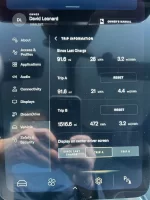You do seem to be a relatively extreme use case, but I still wouldn't worry about this if I were you.
If you saw my post about the Tesla fleet at the Amsterdam Airport, those were early-generation Model S's. Even though being constantly given DC fast charges to 100%, they were still hitting 200,000 km with less than 10% loss in battery capacity. And those cars were built using batteries and pack technology from a decade ago, which is a lifetime in this business.
Take a look at Peter Rawlinson again.
There's something of a myth out and about that all Lotus contributed to the original Tesla Roadster was a body shell and suspension. In fact, Tesla turn to Lotus because they had hit a dead end with powertrain development, and Lotus became heavily involved in the powertrain development as well. And Peter Rawlinson was Lotus' head of Advanced Engineering at the time.
Then Rawlinson was hired as Chief Engineer by Tesla, where he was given only a body shell design that had to have the entire powertrain, including the battery pack and associated electronics, engineered from the ground up. (And it was those packs that were in the cars that have turned out to be so robust in Amsterdam taxi service.)
From there, Rawlinson went to Atieva, which had pioneered the first battery pack that could last for an entire Formula E race and which became the sole supplier to Formula E racing. Those packs racked up more than 2 million race miles without a single failure.
I doubt if there's anybody in this business who knows more about how to build a robust battery pack than Peter Rawlinson.

